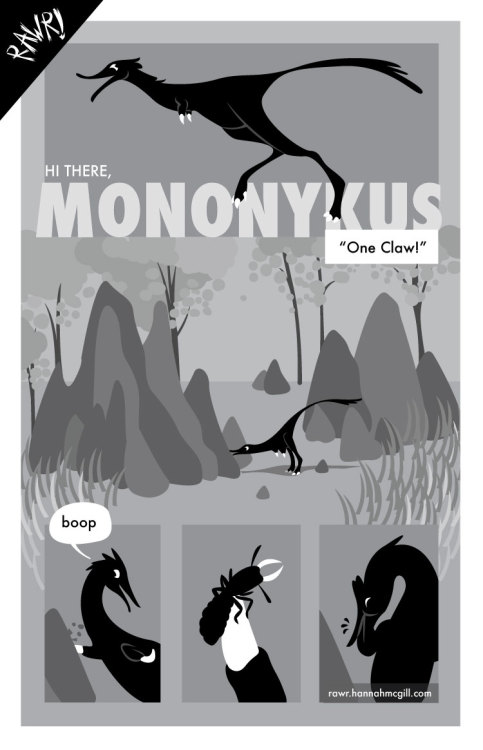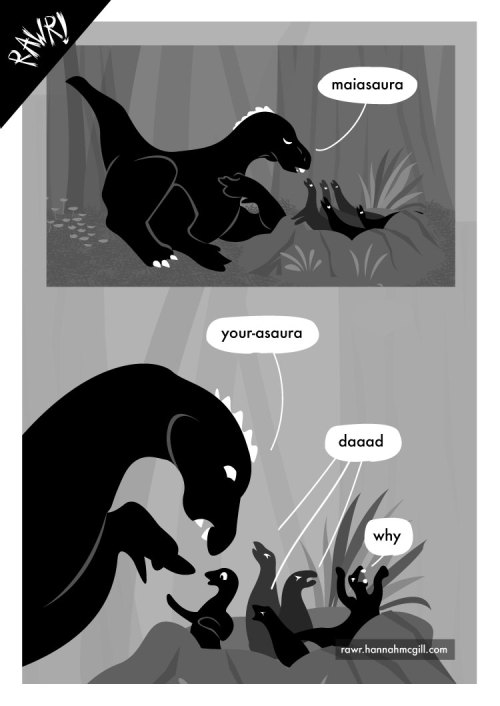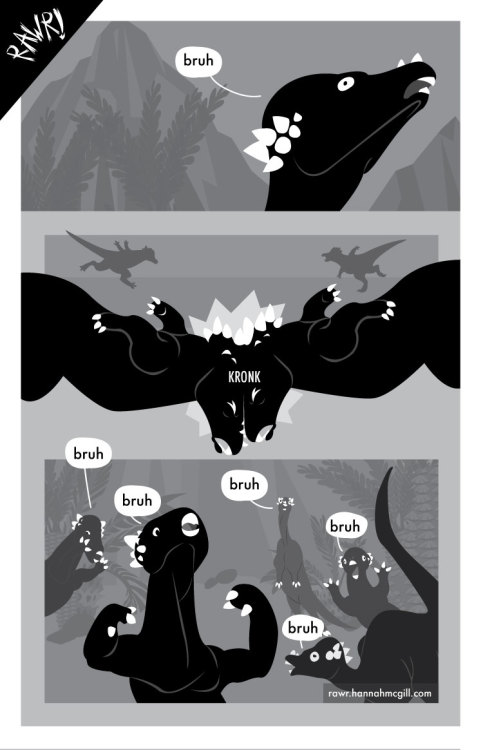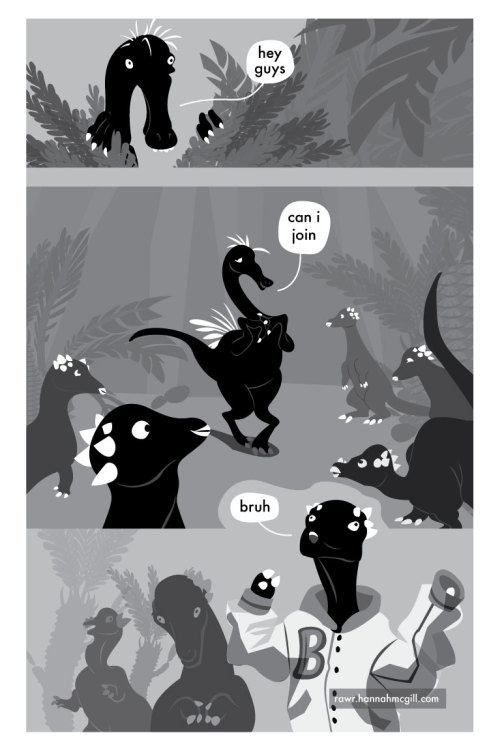#rawr dinosaur friends

Afterlife
Featuring yi qi and the remains of a sauropod.

Corythosaurus Fern Mandala
Free to color under Creative Commons by NC 3.0

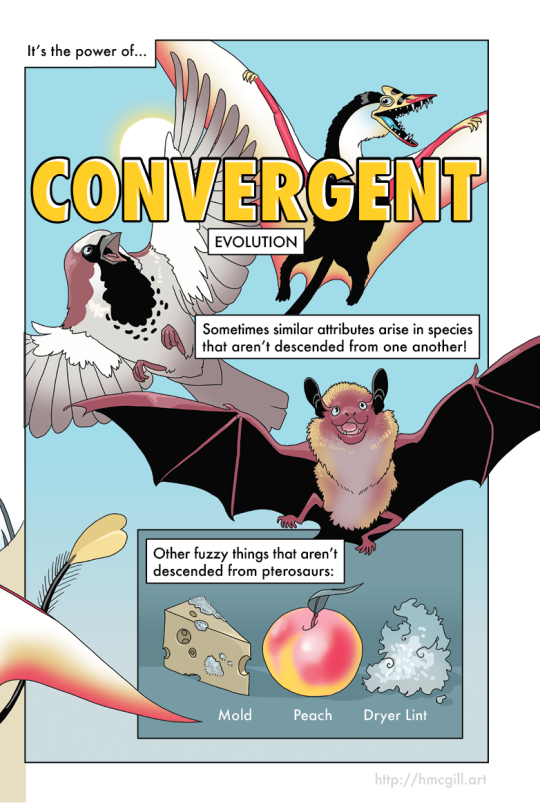




Ideally these two spreads would be part of a much longer comic narrative where the pterosaur spirals into anxiety after the bird informs it that it has nothing to worry about, for the pterosaur is already dead.
Also, the bone diagrams are not peer-reviewed! Nothing I create is peer-reviewed. Always do your own research. Thank you.
[img id]
Page 1
Panel 1: Depicts a dinosaur evolving into a bird on the left, and into a pterosaur on the right.
Narration: This is incorrect!
Panel 2: Depicts a dinosaur first evolving into a pterosaur, then evolving into a bird.
Narration: This is also incorrect!
Panel 3: Depicts a diagram on the left and a small scene on the right. The diagram shows an archosaur evolving into a dinosaur, then a bird. The archosaur evolves into a pterosaur. The scene depicts the anxious pterosaur on a small beach.
Archosaur: (waving at dinosaur) hello
Dinosaur: (waving at archosaur) hey
Bird: (fluffing up happily) much better
Pterosaur: (panicking) b…but… then why am I fuzzy and batlike
Page 2
Panel 1: Depicts a bird, a pterosaur, and a bat flying in front of the goshdarned sun itself.
Narration: It’s the power of…Convergent evolution! Sometimes similar attributes arise in species that aren’t descended from one another.
Panel 3: Depicts a labeled cheese with mold on it, a ripe peach, and a wad of dryer lint.
Narration: Other fuzzy things that aren’t descended from pterosaurs.
Page 3
A full-bleed, single panel page covered by a sky background. Floating in the clouds are skeletal diagrams of a bird and a pterosaur. The actual bird and pterosaur flutter nearby to provide commentary.
Narration: But how do we know this is a case of convergent evolution?
Bird: the clues are in the bones
Narration: Compare these two skeletons. What observations can you make about them?
Pterosaur: …besides the grim inevitability of death
Page 4
This page has five panels floating on a sky background.
Panel 1: Depicts an x-ray of the pterosaur’s wing.
Narration: Since both animals fly, what do you notice about their wing structure?
Panel 2: Depicts an x-ray of the bird’s wing. No text.
Panel 3: Depicts an x-ray of the pterosaur’s pelvis.
Narration: We can also look at other parts for clues, such as their hip bones!
Panel 4: Depicts an x-ray of the bird’s pelvis. The pterosaur and the bird are perched on this panel.
Bird: relax
Bird: everyone has bones inside
Pterosaur: no its morbid!!!
Narration: (Depicted next to a small pencil on paper) Try drawing or tracing the bones to see their differences!
The final two image graphics in this post are the pages depicted earlier, but put together in full-spread form so that readers can envision how it would look in a comic book. [end id]
Carboniferous friends.
Lineart is available to color under CC BY-NC 3.0 license.
[img id=Digital artwork depicting a slice of the Carboniferous period, 359.2-299 million years ago. A logo at the top of a globe with a ribbon encourages viewers to ‘spot ‘em all!’. The digital artwork contains over 250 Carboniferous organisms with lots of different colors and textures. The artist’s favorite organisms here are the shark with a pillar full of teeth on its head (stethacanthus), the 6-foot long centipede (Arthropleura), and edaphosaurus, an early synapsid with a big frill on its back. The organisms are displayed on a pre-Pangea map and large artistic conveniences were taken with regards to which things lived in Antarctica during the Carboniferous. Apologies for not listing every single organism, but rest assured, if you have a favorite animal or plant from the Carboniferous, it’s probably here somewhere!
The second image is the same as the first, only it’s just lines, and ready for coloring. /end img id]
It is beautiful!
The Carboniferous is not my favourite geological period, I prefer the Cambrian (because of the trilobites), and the most important in my heart is the Triassic (the first frogs, horsetails, and the first pterosaurs)… But in Carbon, my beloved ostracodes had their golden age and there developed intensively goniatites, finally we also have insects. Unfortunately, the era of graptolites and trilobites is ending, which makes me sad.
Sorry for possible naming errors. I wrote the text in Polish with the correct terms - but google translate could messed something up :)
Thank you! I would not be able to distinguish any naming errors if there are any in your response. I am so thankful that it made you happy. Maybe someday I will have a Cambrian or a Triassic version of this, too!
To generally note, I do not have paleontology expert backing on the research I did for this piece. There could be organisms I am missing or have misrepresented. I made it as an example of something I would like to someday create with an expert helping me out. For the time being, I only hope it brings joy.
To the person who brought up tiktaalik in the tags:
As far as I know, tiktaalik didn’t persist into the Carboniferous and is not depicted in the scene above, but I want to acknowledge the tiktaalik enthusiasm because I like them too. Here you go, a little visitor from the Devonian, with some low-effort lycopsids. I also saved some blank lines (CC BY-NC 3.0) if you want to color it!
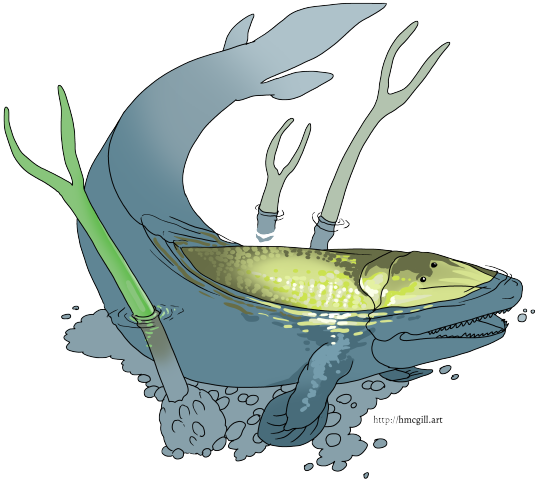

[img id 1 of 2: Digital artwork of a tiktaalik, which is a fish that has lobe-like fins allowing it to crawl across the ground. Scientists propose that the tiktaalik shares the common ancestor between fish and all existing tetrapods and is an example of a transitional fossil. The depicted tiktaalik is submerged with its lobe fins on the bottom of a shallow pond covered with gravel. Three ancient plants called lycopsids are arranged around the tiktaalik, and they look like weird green pitchforks with only two tines. The plants were probably not rendered very accurately because all of the reference I could find was crunched and hard to make out.
img id 2 of 2 is the same image, but the colors are omitted so interested parties may color it for themself.]
Post link
Carboniferous friends.
Lineart is available to color under CC BY-NC 3.0 license.
[img id=Digital artwork depicting a slice of the Carboniferous period, 359.2-299 million years ago. A logo at the top of a globe with a ribbon encourages viewers to ‘spot 'em all!’. The digital artwork contains over 250 Carboniferous organisms with lots of different colors and textures. The artist’s favorite organisms here are the shark with a pillar full of teeth on its head (stethacanthus), the 6-foot long centipede (Arthropleura), and edaphosaurus, an early synapsid with a big frill on its back. The organisms are displayed on a pre-Pangea map and large artistic conveniences were taken with regards to which things lived in Antarctica during the Carboniferous. Apologies for not listing every single organism, but rest assured, if you have a favorite animal or plant from the Carboniferous, it’s probably here somewhere!
The second image is the same as the first, only it’s just lines, and ready for coloring. /end img id]
Post link
Today I would like to offer free(for personal/non-commercial use) natural history coloring pages. This one’s based on the Cambrian explosion. Let me know what you think. Top has gray background to help if you only want to color the critters, bottom has white background if you want to choose the color there.
If you color one, please tag me and I will reblog it.
Post link
Just popping in to add a little bit of the Cretaceous to your Jurassic June. Velociraptor learns why dancing in front of a Gobiconodon den is not a great idea.
Image description:
Digital artwork of a velociraptor shaking its tailfeathers in front of a gobiconodon nest. The nest is under a tiny sprouting ginkgo tree. While one gobiconodon tends little baby gobiconodons, the other takes aim for the velociraptor’s cloaca with its teeth.
Post link

What do we think of a new cover idea?
Forgive the awkward self portrait if you can. I didn’t have time to design my own Ms. Frizzle. (Who can compete with her, anyway!)
An experiment!
If I were to move forward with revisiting more comics, I think a simpler style would be better. I love using these colors, though. What do you think?
[Comic transcript: Eight panels depict eight different epochs in natural history: Ordovician, Silurian, Devonian, Carboniferous, Permian, Triassic, Pleistocene, Anthropocene. Through each panel, a horseshoe crab gets closer and closer to the viewer while all sorts of prehistoric creatures come and go through the ages. In the final panel, the horseshoe crab says ‘keep on truckin lol’ [sic] and the millions of years it took for this crab to get here and say this only add to the gravitas of the situation. End transcript.]
Post link
Cladistics may achieve some order in classifying animals, but it will never solve dysfunctional family relations.
Post link
Way to go, ground sloth, it’s not like he was using that tree as cover or anything.
Twitter|Facebook|Livestream|DeviantArt
Post link
“Don’t you want to hear about how your great, great, great, great…[…]…GREAT grandfather and I first met?”
Post link
Dad jokes preserve well in peat bogs, fossilize, and are dug up by new dads whostill think the jokes are greatest thing ever.
Post link











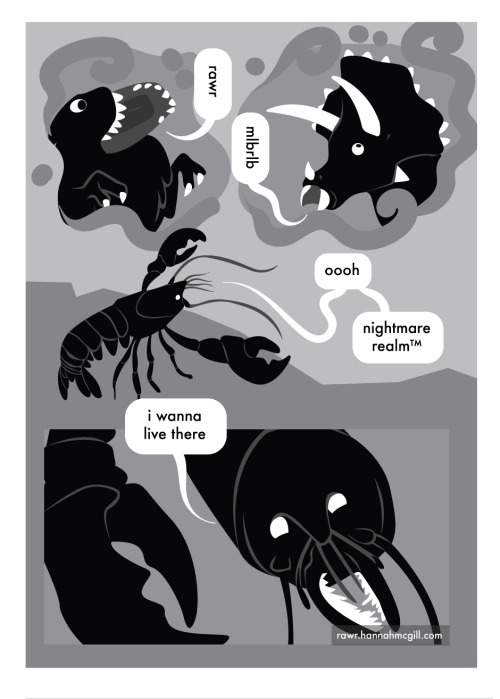



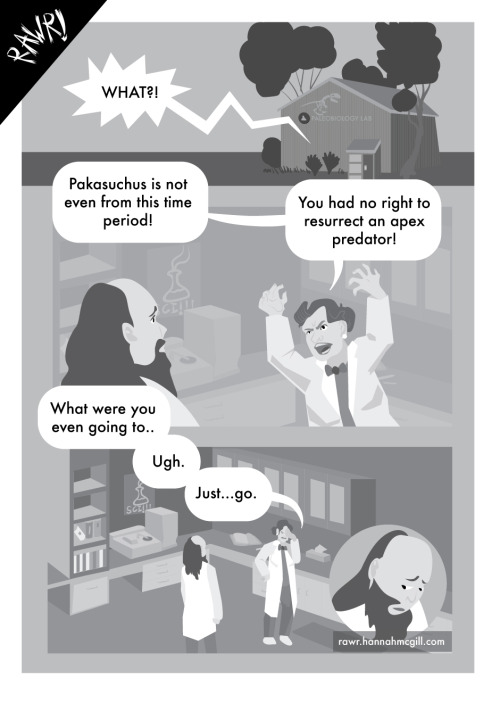
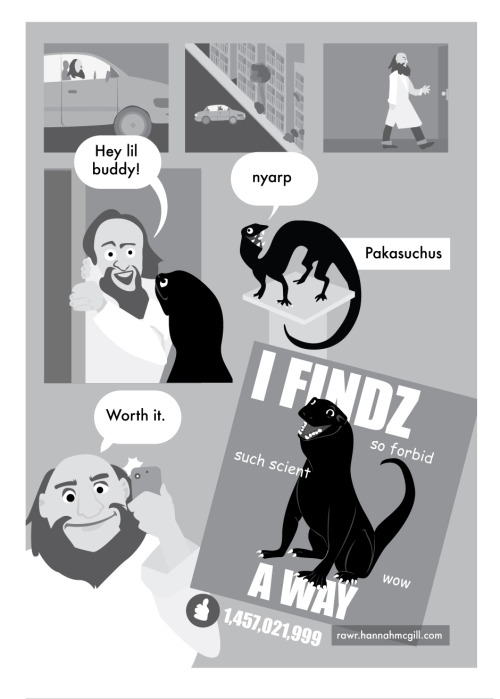

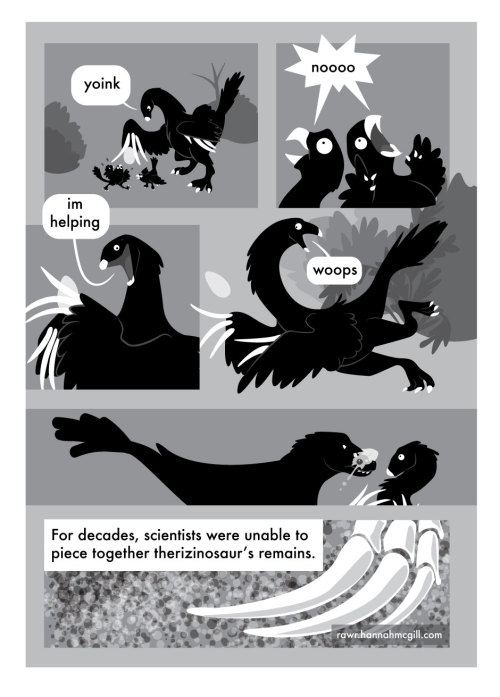

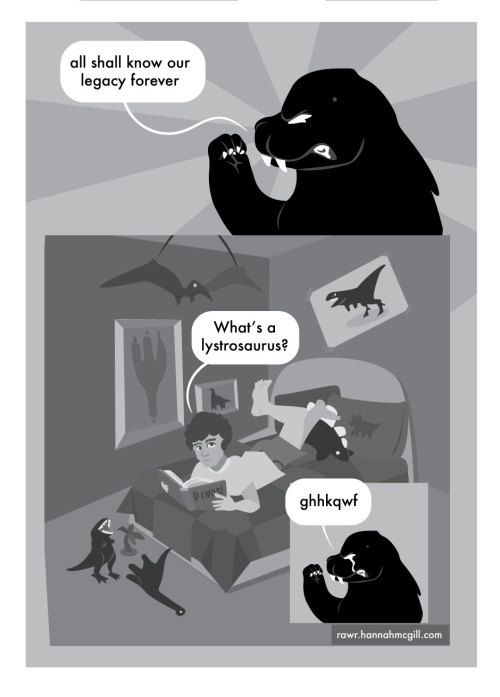
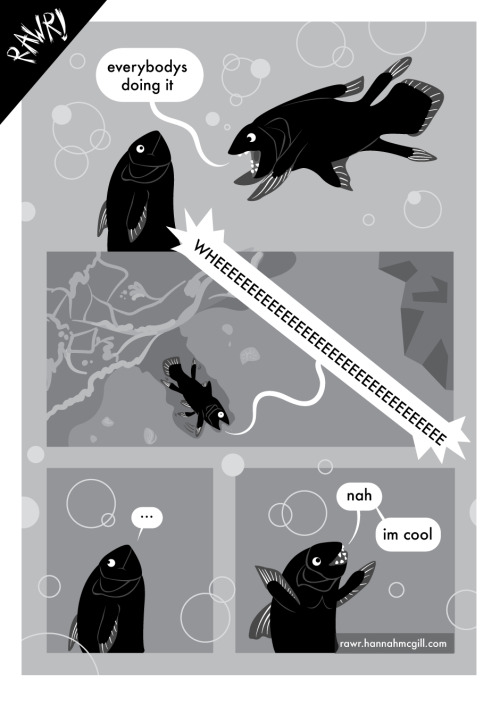





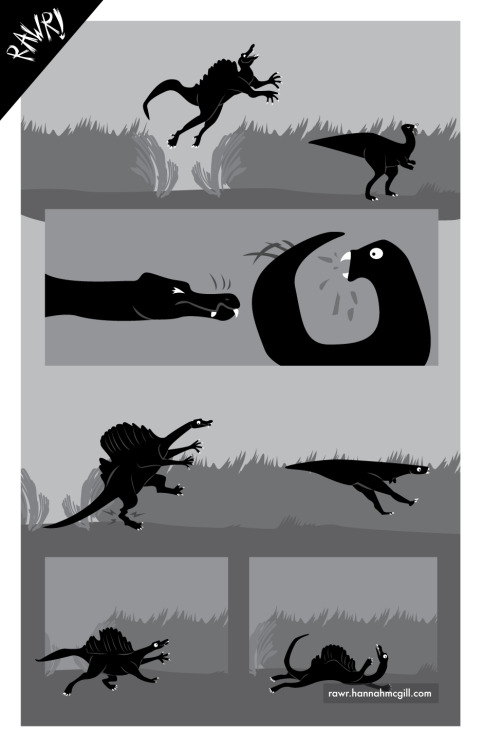
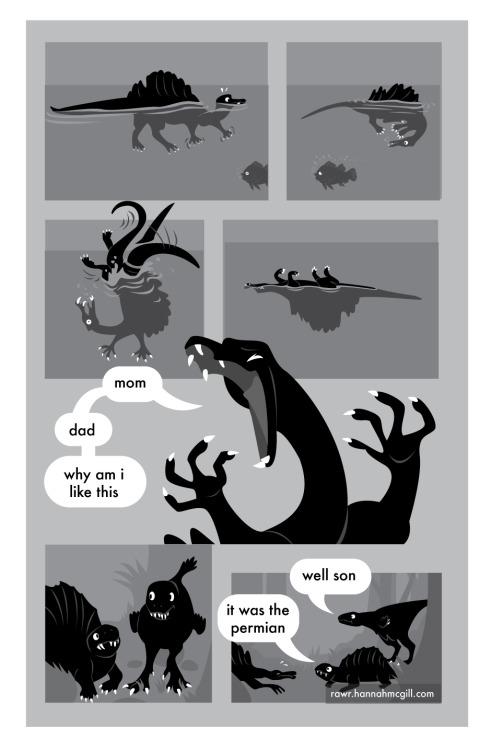
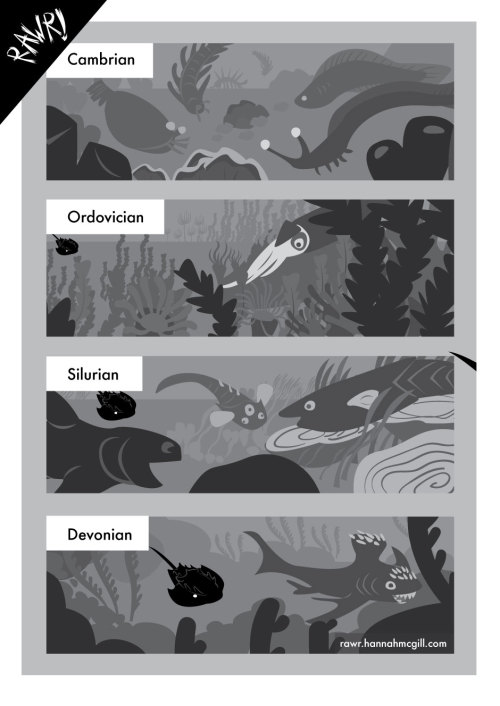


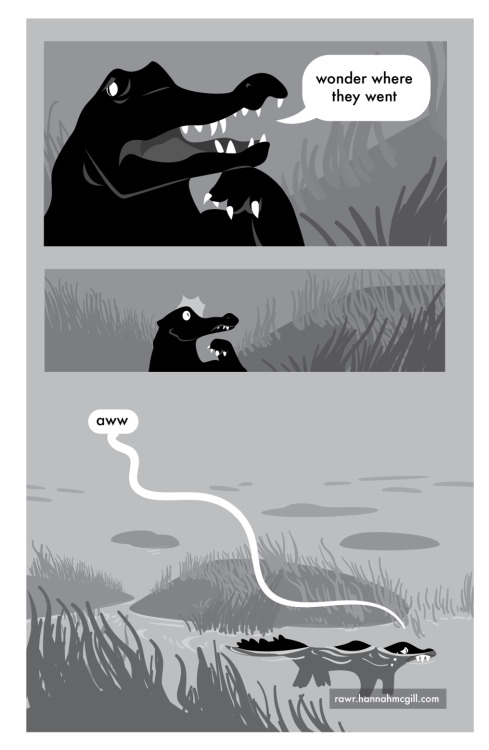





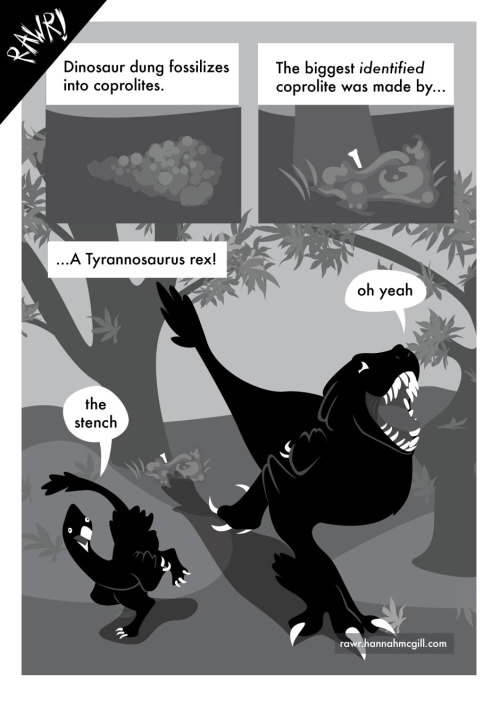

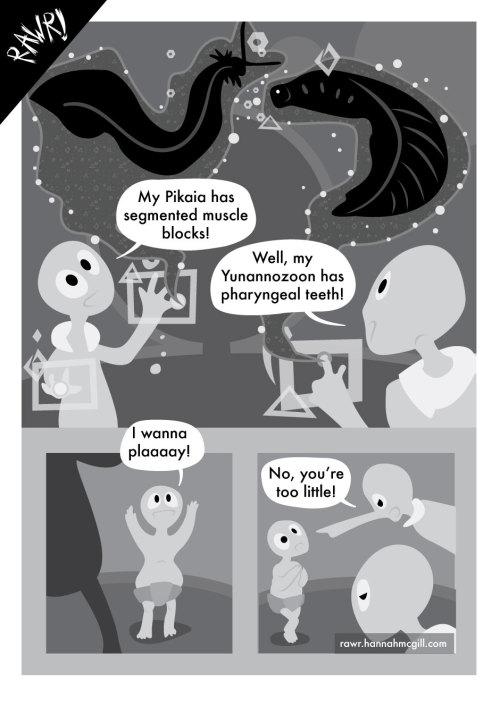
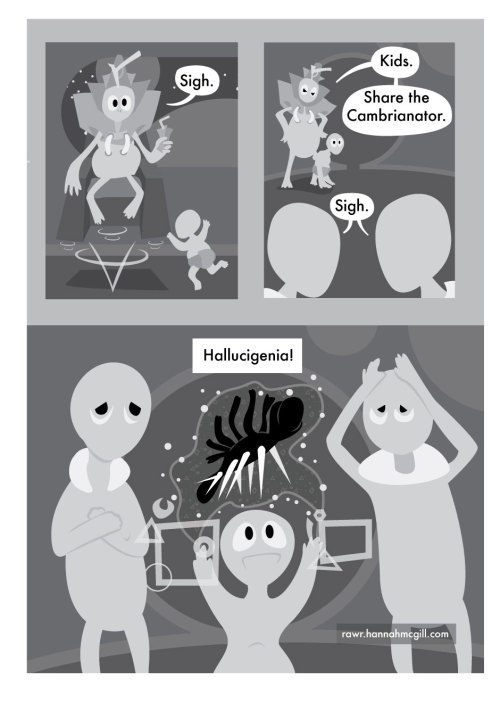
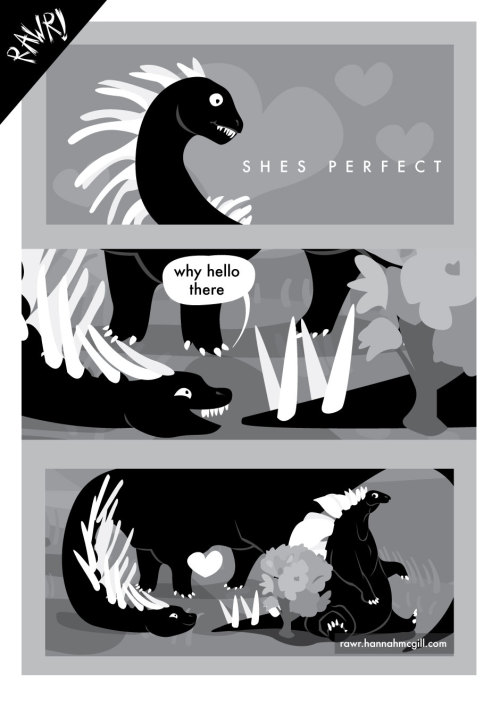
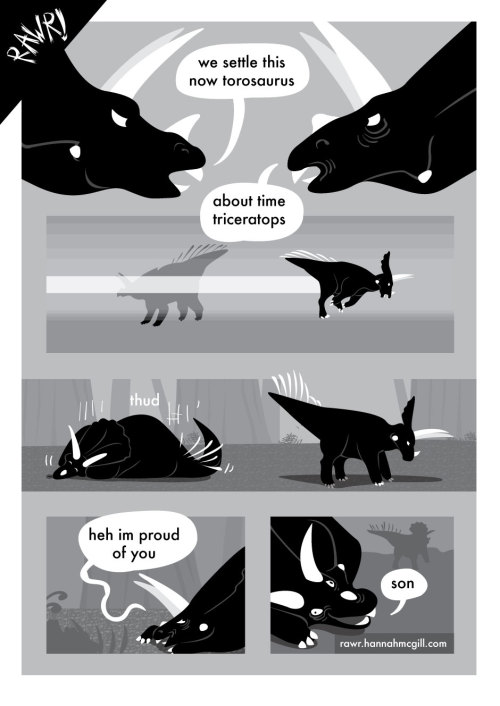
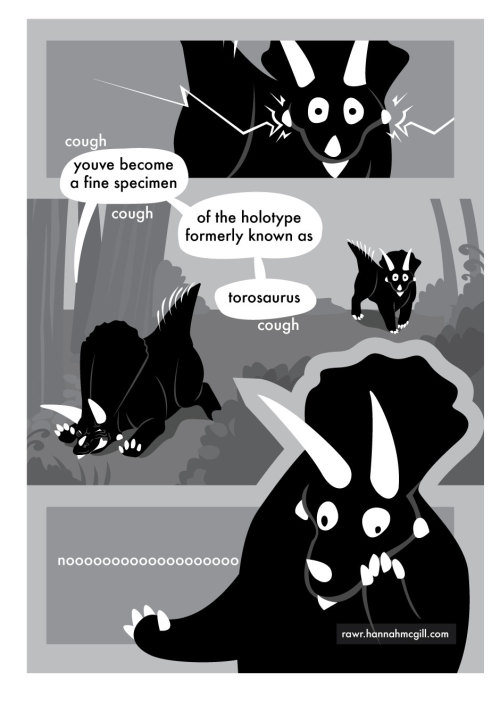
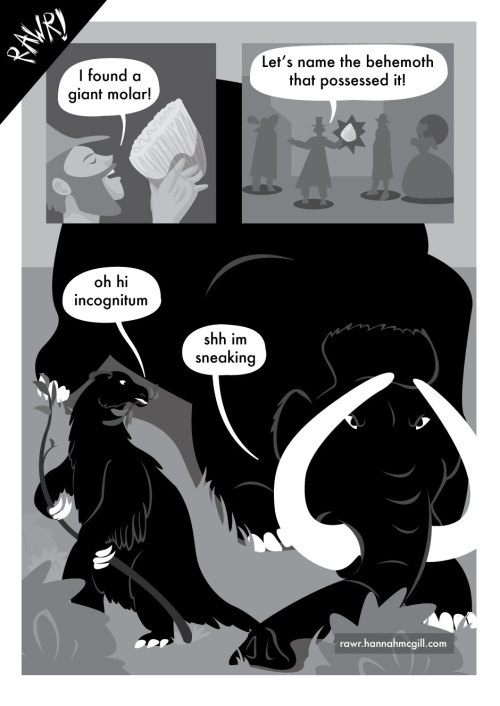

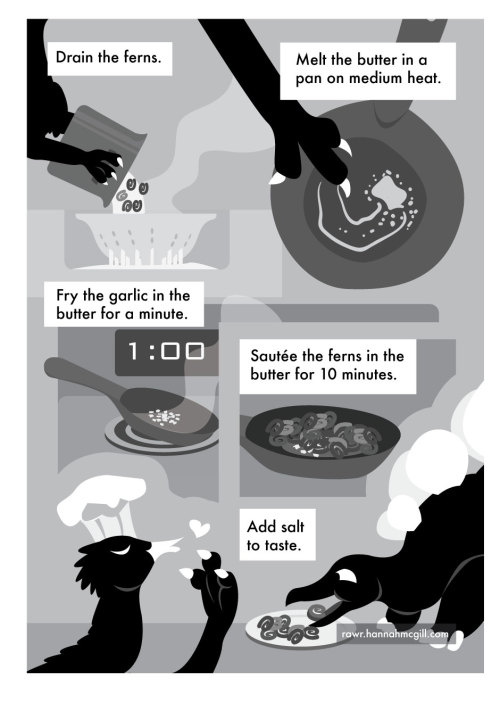

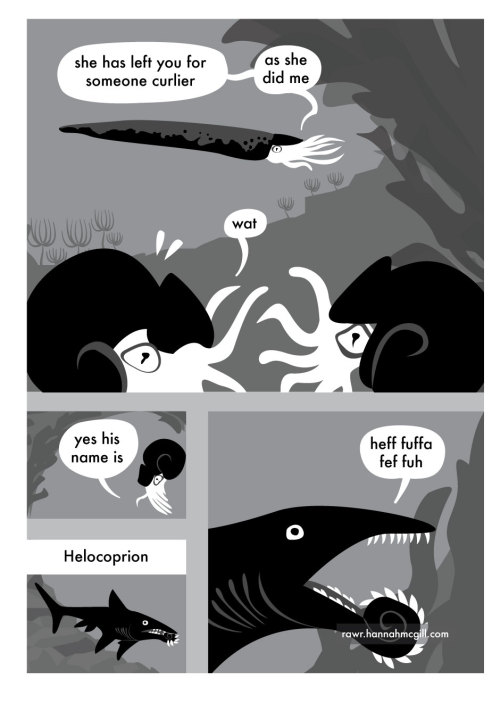


![“Don’t you want to hear about how your great, great, great, great…[…]&hell “Don’t you want to hear about how your great, great, great, great…[…]&hell](https://64.media.tumblr.com/a3bd6c87eef05d9b36bb348c8adb5cc5/tumblr_nmzf7iTH0H1sfhs9ko1_500.jpg)
![“Don’t you want to hear about how your great, great, great, great…[…]&hell “Don’t you want to hear about how your great, great, great, great…[…]&hell](https://64.media.tumblr.com/90497fa3c3a7832231651373264c4d35/tumblr_nmzf7iTH0H1sfhs9ko2_500.jpg)
